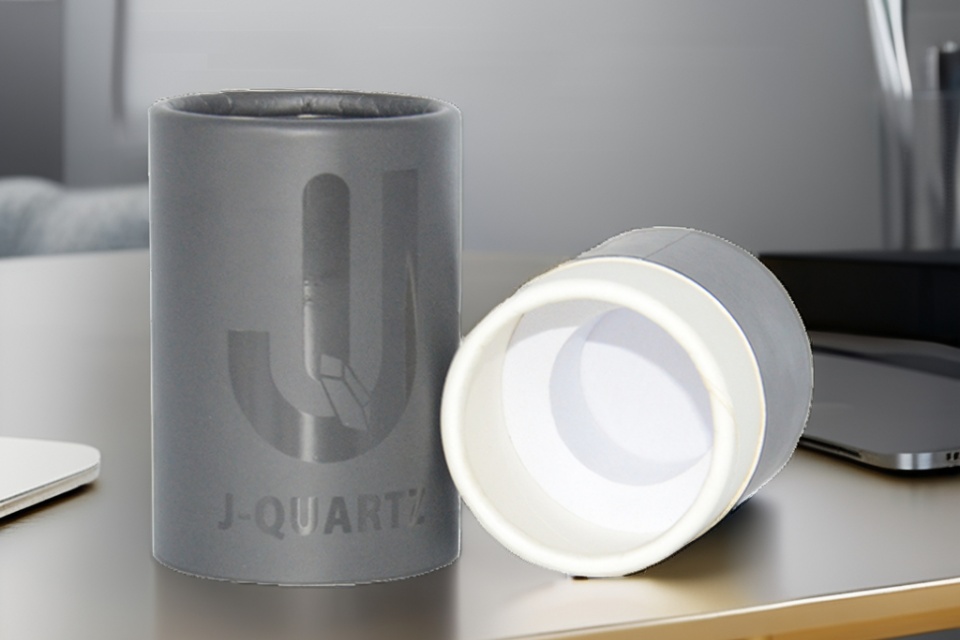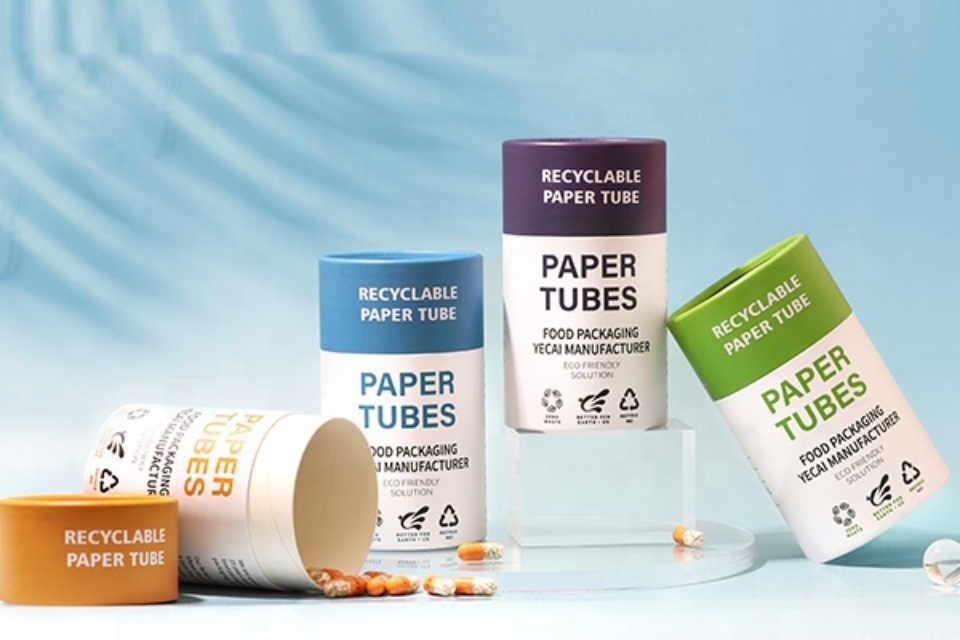Creative Uses For Paper Tubes
Creative Uses For Paper Tubes
Summary
Creative Uses for Paper Tubes refers to the various innovative and practical applications of cylindrical structures made from paper, commonly derived from everyday items such as toilet paper and paper towel rolls. These versatile objects have gained recognition for their potential in crafting, organization, and education, fostering creativity and sustainability in both individual and community contexts. The significance of paper tubes lies not only in their resourcefulness but also in their contribution to environmental awareness, emphasizing a shift towards more sustainable practices by repurposing materials that would typically be discarded.
Throughout history, paper tubes have evolved from their origins in ancient China, where early forms of paper were created, to becoming integral components in numerous industries, including packaging, textiles, and art. As industrial advancements allowed for large-scale production, the utility of paper tubes expanded, with contemporary applications ranging from functional storage solutions to intricate DIY projects. Their lightweight, recyclable nature positions them as eco-friendly alternatives to conventional packaging materials, further enhancing their appeal in today's environmentally conscious society.
The creative potential of paper tubes extends beyond mere recycling; they serve as educational tools that can inspire creativity in children and adults alike. Engaging activities such as crafting, STEM projects, and interactive learning experiences utilize paper tubes to teach valuable skills, while simultaneously promoting environmental stewardship. By transforming these everyday objects into art and functional items, individuals can cultivate a mindset that values resourcefulness and ecological responsibility.
Despite the numerous benefits associated with paper tubes, there are also challenges related to maximizing their creative use and effective recycling. The need for innovative approaches to overcome these obstacles is critical, as communities continue to explore ways to integrate environmental education with crafting practices. By fostering a culture of creativity and sustainability, paper tubes exemplify how simple materials can be repurposed to create meaningful projects that resonate within households and beyond.
History
The history of paper tubes dates back to the early advancements in papermaking, which can be traced to ancient China, where the first forms of paper were developed around the 2nd century CE. Initially, paper was used primarily for writing and printing, but as the techniques evolved, so did the applications of paper products, including the creation of cylindrical forms like tubes.
By the 19th century, the industrial revolution brought about significant changes in the production of paper, leading to the mechanization of papermaking processes. This allowed for greater consistency and volume in paper production, making it feasible to create paper tubes on a larger scale. The paper tube industry began to flourish as various industries recognized the versatility and utility of these cylindrical structures for packaging and storage.
In the early 20th century, paper tubes found a broad range of applications, particularly in the textile and packaging industries. Their lightweight and recyclable nature made them an attractive option for manufacturers seeking sustainable packaging solutions. The production process became more refined, involving the cutting of larger paper sheets into thin strips, which were then wrapped and glued to form strong, durable tubes.
Today, paper tubes are used in numerous sectors, including automotive, art supplies, and food industries, demonstrating their adaptability to various packaging needs. Their construction has evolved, utilizing materials such as recycled paperboard and cardboard, which not only enhances their durability but also supports environmentally friendly practices. As sustainability continues to be a critical consideration for businesses, the use of paper tubes is expected to grow, reaffirming their place in the history of packaging innovation.
Common Creative Uses
Paper tubes, commonly found in households as remnants from toilet paper and paper towel rolls, offer a plethora of creative possibilities for crafting and upcycling. These versatile items can be transformed into various projects that not only entertain but also educate, fostering creativity and resourcefulness, especially among children.
Organizational Tools
Beyond crafting, paper tubes can be effectively utilized for organization. They can be transformed into storage solutions for small items, such as craft supplies, cords, or garden seeds, promoting tidiness and efficiency in home environments. Their cylindrical shape makes them ideal for dividing spaces in drawers or providing easy access to small accessories during travel. This practical application not only reduces clutter but also encourages a sustainable lifestyle by minimizing waste.
Crafting and DIY Projects
One of the most popular uses for paper tubes is in crafting. These tubes can be repurposed into a myriad of fun projects, such as binoculars, puppets, or even wall art. They serve as an excellent medium for children to engage in creative activities, allowing them to create items like coiled snake crafts or playful monsters adorned with paint and construction paper. Additionally, paper tubes can be used for structural projects, such as building a hand-crank winch or a ball run, integrating STEM learning with artistic expression.
Environmental Awareness and Education
The creative reuse of paper tubes also plays a significant role in environmental education. Projects that involve repurposing these tubes into art or functional items can teach children about sustainability and the importance of reducing waste. By viewing everyday items as potential tools for creativity, individuals can develop a mindset that values resourcefulness and ecological responsibility. Community art installations utilizing paper tubes as part of larger recycling initiatives highlight this connection between creativity and environmental stewardship.
Gift and Decor Ideas
Finally, paper tubes can serve as innovative solutions for gifting and decoration. They can be fashioned into unique party favors, decorative centerpieces, or custom packaging for small gifts, marrying functionality with creativity. These applications not only provide aesthetic value but also encourage sustainable practices by making use of materials that might otherwise be discarded.
Educational Uses
Paper tubes, such as those from toilet paper and paper towels, serve as versatile tools in educational settings, fostering creativity and learning among students. These cardboard tubes can be transformed into various educational games and activities that engage children in hands-on learning experiences. For instance, teachers can utilize toilet paper rolls to create games like tic-tac-toe, where students can use the rolls as game pieces, thus integrating play with learning.
Crafting and Arts
Craft activities utilizing paper tubes are abundant and can stimulate creativity in children. Projects range from constructing binoculars to designing bird feeders, allowing students to express their artistic side while honing fine motor skills. Additionally, cardboard tubes can be used in collaborative art projects, such as creating wall art or large murals, encouraging teamwork and imaginative thinking.
STEM Activities
Incorporating paper tubes into STEM (Science, Technology, Engineering, and Mathematics) education is a particularly beneficial. Teachers can engage students with projects like marble runs or wind cars, which not only teach engineering principles but also encourage problem-solving and critical thinking skills. Moreover, children can learn about biology by using these tubes as biodegradable seed pots, fostering an understanding of plant growth and sustainability.
Interactive Learning
Beyond crafts and STEM, paper tubes can facilitate various interactive learning experiences. For example, teachers can design physical challenges that require balance and coordination, turning recess into an opportunity for physical education and teamwork. Such activities can be integrated into lessons, enhancing student engagement and making learning more dynamic.
By incorporating paper tubes into classroom activities, educators can create a fun, engaging, and environmentally friendly learning environment that encourages creativity and critical thinking among students.
Community Initiatives
Collaborative Environmental Art Projects
Community initiatives that focus on recycling often incorporate art as a medium for environmental awareness. One approach is to organize large-scale art installations using specific recyclables, such as bottle caps and plastic rings. These projects not only provide a creative outlet but also facilitate discussions about consumption and waste within the community.
Educational Programs in Schools
Schools play a vital role in fostering environmental stewardship among students. Programs like EcoSchools Canada aim to engage K-12 students in environmental learning and action, creating vibrant networks of schools and community partners. By embedding ecological literacy into the curriculum, these initiatives help students understand the importance of recycling and sustainability. Efforts to communicate recycling initiatives effectively to students and staff, through engaging materials and competitions, can further promote a culture of recycling within schools.
Recycling Workshops and Presentations
Community organizations often hold workshops and presentations to educate residents about recycling practices. For instance, the Southwest Boston Community Development Corporation reported that their youth participants found presentations on waste management inspiring, leading to increased awareness about their waste disposal practices. Such initiatives highlight the importance of community engagement in promoting responsible waste management behaviors.
DIY and Upcycling Activities
Encouraging creative reuse of common household items, such as toilet paper and paper towel tubes, can be both fun and educational. Many organizations and blogs share ideas for DIY projects that utilize these materials, allowing participants to explore their creativity while learning about sustainability. This hands-on approach not only emphasizes the potential of materials often deemed as waste but also inspires a shift in perspective regarding what can be crafted from recyclables.
Community Involvement and Social Media
Utilizing social media platforms can enhance community involvement in recycling initiatives. Sharing creative projects online allows individuals to connect with others who are interested in sustainable practices. This exchange of ideas can inspire more community members to participate in recycling activities and engage in discussions about environmental responsibility.
Environmental Impact
The environmental impact of paper tube production and recycling is significant, particularly when considering their role in promoting sustainability and reducing waste. Paper tubes are made from recycled paperboard, making them an eco-friendly option compared to traditional packaging materials such as plastic or metal. By utilizing recycled materials, the production process for paper tubes contributes to the conservation of natural resources and energy savings, while also reducing greenhouse gas emissions associated with manufacturing new materials.
Benefits of Recycling Paper Tubes
Recycling paper tubes plays a vital role in enhancing environmental sustainability. The recycling process not only minimizes landfill waste but also helps in conserving biodiversity and mitigating climate change. It has been estimated that recycling can significantly lower emissions; for instance, Project Drawdown suggests that recycling activities between 2020 and 2050 could reduce carbon dioxide emissions by approximately 5.5 to 6.02 gigatons, equivalent to taking over a billion cars off the road for a year. The act of recycling paper tubes leads to reduced demand for raw materials, which in turn lowers energy consumption, waste generation, and pollution levels associated with production processes.
Challenges and Innovations
Despite the environmental benefits, challenges remain in maximizing the effectiveness of paper tube recycling. Research indicates that while recycling efforts are crucial, they must be complemented by a transition to renewable energy sources. This shift could potentially reduce emissions from paper recycling by as much as 96% when combined with improved recycling practices. As such, while recycling alone may not suffice to meet climate goals, integrating sustainable energy solutions into the recycling process is essential for achieving greater environmental benefits.
Challenges and Solutions
Many paper crafters encounter a variety of challenges that can hinder their creative processes. Understanding these common issues and finding effective solutions can significantly enhance the crafting experience.
Common Challenges in Paper Crafting
One prevalent challenge faced by paper crafters is the difficulty in finding innovative uses for materials that are often discarded, such as toilet paper and paper towel tubes. These items can be overlooked due to their commonality, leading to wasted resources that could be repurposed creatively. Additionally, crafters may struggle with organizing their workspace effectively, which can result in frustration and inefficiency during projects.
Another challenge is the need for educational approaches to environmental sustainability in crafting. Many crafters desire to create art that not only inspires but also raises awareness about recycling and waste reduction. This dual focus can complicate the crafting process, as it requires additional planning and creativity to align artistic expression with environmental education.
Practical Solutions
To overcome these challenges, crafters can adopt several practical solutions. For instance, they can explore a range of creative applications for toilet paper and paper towel tubes, such as organizing cables or creating seed starters. By thinking outside the box, crafters can transform everyday items into functional tools and artistic elements, thereby reducing waste while enhancing their projects.
Furthermore, incorporating educational components into crafting activities can provide both engagement and learning opportunities. Transforming recyclable materials into artistic creations allows children to engage in hands-on environmental education while developing problem-solving skills. This approach fosters a mindset that values sustainability and creativity simultaneously, encouraging crafters to view materials in a new light.
Ultimately, by recognizing and addressing these challenges, paper crafters can not only improve their crafting experiences but also contribute positively to environmental sustainability through innovative and responsible practices.



